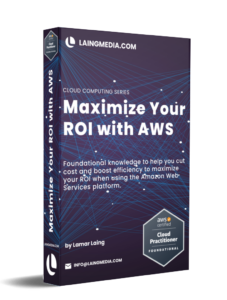There has been a lot of buzz recently around cloud solutions, and with that, architects face the challenge of anticipating current and future scale requirements. Whether it’s accommodating organic growth or sudden surges due to mergers and acquisitions, architects must ensure their solutions can scale seamlessly. Scaling, however, often introduces complexities regarding manageability, performance, and security. Here are five principles and strategies for architecting solutions that scale reliably, mitigating these challenges using Amazon Web Services (AWS).
Modularity: Simplifying Complexity
One key principle for ensuring reliable scalability is modularity. This approach involves breaking down complex components or solutions into smaller, manageable parts. By doing so, architects can make their solutions more scalable, secure, and easier to manage. A prime example of this is the microservices architecture, where applications are constructed from loosely coupled building blocks that integrate through defined interfaces. This separation of concerns allows for independent management, security, and scaling of each component, avoiding the pitfalls of “fate sharing,” where a single failure impacts the entire system.
Horizontal Scaling: Handling Increased Load
Horizontal scaling, also known as scale-out, involves automatically adding systems or instances to distribute increased workloads. For instance, web applications experiencing a surge in session numbers can benefit from horizontal scaling. This approach not only enhances performance but also improves reliability, especially when instances are distributed across Availability Zones. To achieve seamless scale-out, applications should be designed to support a stateless scaling model, where state information is stored independently from application instances.
Leveraging Content Delivery Networks
Incorporating Amazon CloudFront and its edge locations into your architecture can enable rapid and reliable global scaling without adding complexity. For instance, CloudFront played a crucial role in handling the scale demands of Amazon Prime Day 2020, serving millions of HTTP requests per minute. By distributing content through a CDN, you can enhance both performance and reliability.
Embrace Serverless Where Possible
In pursuit of modularity, microservices architecture can introduce complexity as the number of components grows. Serverless services offer a solution to manage this complexity efficiently at scale. With serverless, you no longer need to provision and maintain servers or runtimes. Services like AWS Lambda allow you to run and scale your code effortlessly. Event-driven serverless capabilities are also invaluable in modern cloud solutions.
Secure by Design: Avoiding Post-Scaling Security Challenges
Security should be a concern from the beginning of your solution. Neglecting security in the early stages can lead to significant challenges as your solution scales. Leveraging CDNs like CloudFront can help mitigate DDoS attacks and provide application layer filtering. Furthermore, adopting the Shared Responsibility Model allows you to delegate parts of the security stack to AWS so you can focus on building applications.
Design for Failure: Ensuring Resilience
Reliability at scale hinges on resiliency. When designing for failure, the goal is to create a solution that can recover from infrastructure or service disruptions. Even when components fail, the solution should continue to deliver an acceptable level of functionality. This principle is critical at scale, where the impact of failures can be substantial.
Connect with a Cloud Architect
Architecting for reliable scalability should always be the primary goal. When combined with a DevOps model, these tips can help you build solutions that not only scale but also thrive in an ever-changing cloud landscape. Building today with tomorrow in mind is the key to success in the world of cloud solutions. Curious about how cloud platforms like AWS can help you scale? Reach out to one of our expert Cloud Architects at Laing Media today. www.laingmedia.com
5 Digital Marketing Tips To Enhance Your E-Commerce Business
Businesses used to rely heavily on elaborate window displays and expensive advertisements in local publications in order to have their products sell. Salespeople used to travel door-to-door to spread awareness and showcase product testing in people’s homes in hopes to...
The Science Behind Social Media Marketing
“Over 53% of the world’s population is on social media.” The way the world connects changed with the introduction of the internet. We took it a step further when we found new ways to engage and interact through social media. Today, social media is everywhere. People...
What is SEO and How Does It Work?
If a tree falls in the forest, and nobody is around to hear it, does it make a sound? What is a great idea worth if nobody can see it or hear about it? How do you create an impact if nobody knows what you offer? These are the questions that SEO marketers frequently...
Talk to an expert.
For more information on holiday season content and Laing Media’s digital marketing services.






